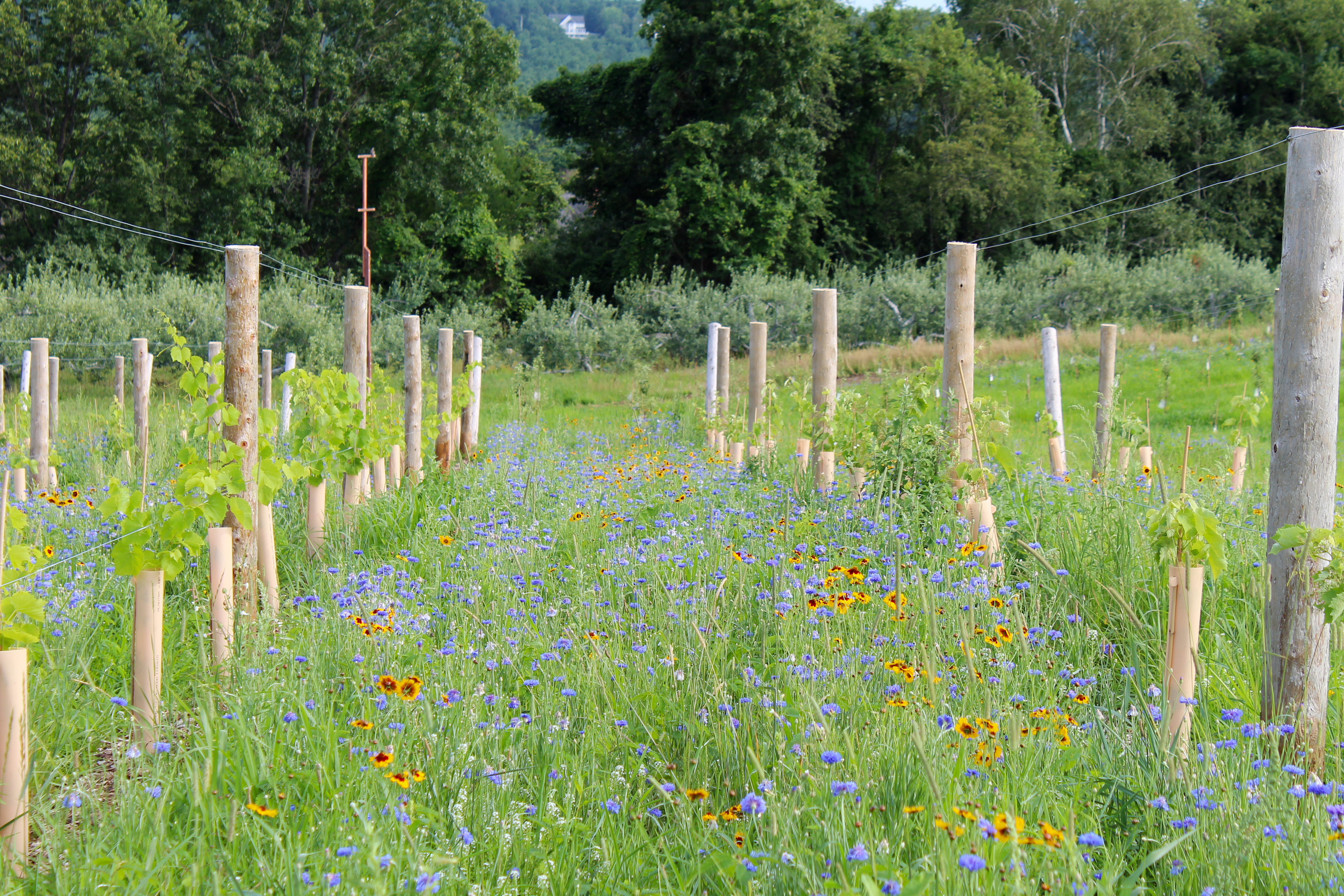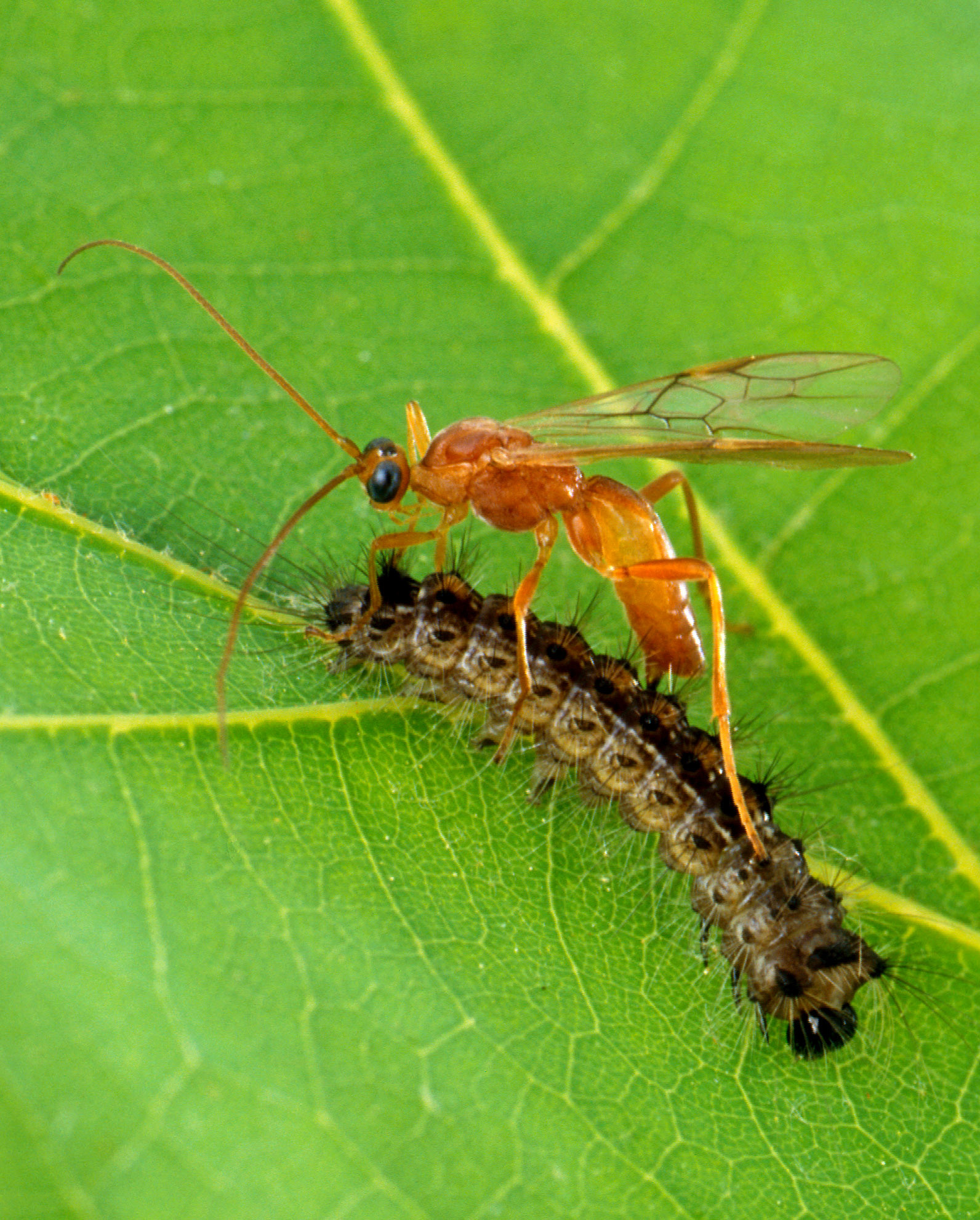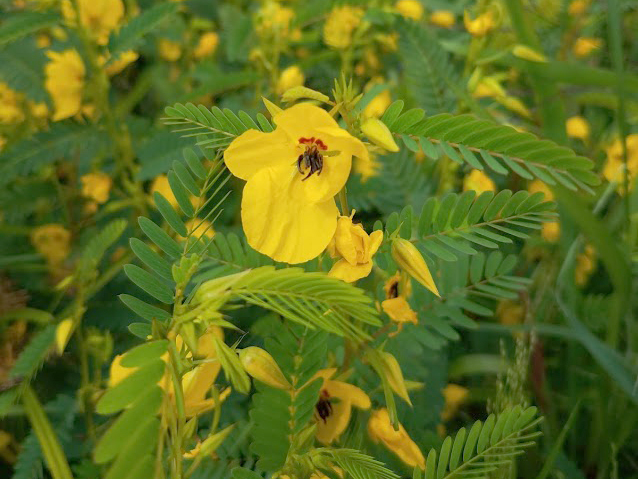This positive case study demonstrates the possibilities for farmers interested in supporting native pollinators and reducing or eliminating pesticide use.
Mike Madden, the owner and operator of Scooter’s Farm of Woodmont, New Hampshire, is a young and energetic new farmer. Within a year of purchasing part of an old apple orchard, Mike has befriended anyone that knows anything about apple production in the state. He soaked up information from these experienced folks and is confidently striding forward into the world of commercial apple production.

Mike’s first step was to contact his county office of the USDA’s Natural Resources Conservation Service (NRCS). Through competitive applications, the NRCS provides farmers with financial help—or in NRCS terms, “cost-share payments”—to address natural resource concerns on their land and to implement new management practices that result in more sustainable crop production. When Mike met with Kim Bakker of the NRCS, he learned that he could apply for financial support to enhance pollinator habitat on his land. Mike hoped to satisfy all of his crop pollination requirements by supporting native pollinators, and in one fell swoop, avoid shelling out money to rent honey bee hives each spring. He then applied for, and was awarded, a contract with the NRCS to increase pollinator habitat on his farm.
To better understand how best to support pollinators on Mike’s farm, Kim reached out to me, a Xerces Pollinator Conservationist and Partner Biologist with the NRCS. Often, the lag time between planning pollinator conservation work and seeing the finished product is measured in years. Not at Scooter’s Farm. It seemed that only days after I sent Mike the formal plan, he had put up native bee boxes and prepped over four acres for not only pollinator habitat, but also natural enemies.
Natural enemies are the underappreciated “good insects” on farms that help to control pests. You may have heard of ladybugs, but the term “natural enemies” also encompasses less well-known creatures like hoverfly larvae, black bristly tachinid flies, and tiny braconid parasitoid wasps.

So how do natural enemies help control crop pests? They eat them. Most of this eating happens during the natural enemies’ immature—or larval—stages. As adults however, most species of natural enemies require a sugar source—like nectar from flowering plants. That is why many growers across the globe plant nectar sources for these beneficial insects. The science is there: Insectary plantings are known to support natural enemies, and these strategies can be part of a holistic, non-chemically intensive way to help control crop pests.
Initiated by a New Hampshire NRCS Conservation Innovation Grant, Xerces has been conducting on-farm trials in the state for three years. Our objective has been to test these flowering plants for their popularity—not with beneficial insects, but with growers. Scientific literature demonstrates that these plants attract and promote natural enemies, but we’re still working on what will be accepted and adopted by growers. This year, seed mixes were distributed to over 80 sites for testing. So far, the most promising mix is an even blend of four short-statured, annual flowers: Sweet alyssum, bachelor button, plains coreopsis, and partridge pea. This mix of plants was chosen for a few reasons: The mix stays fairly short and will not flop over into crop rows, it is adaptable to a wide range of sites, and it is well-loved by the growers that have tested it.
When I asked Mike if he would like to participate in our on-farm trials, he went whole-hog. Mike planted our trial insectary mixes in every alleyway of his newly planted apple trees and vineyard. Planted in mid-May after Mike prepped the site with tractor-drawn cultivation equipment known as discs, the sweet alyssum in the trial flower mix started blooming in mid-June. Sweet alyssum blooms virtually the entire season and provides nectar accessible to natural enemies at a time when “good bugs” are the most important: Before pest populations have a chance to explode.
Bachelor buttons opened their rays next, attracting not only natural enemies but also pollinators. By August, the small yellow and rusty-red native wildflower, plains coreopsis, added to the colors already spilling across the orchard floor. Finally, in late August, the last species to flower outshone the rest. Partridge pea bloomed in full, providing nectar both through its yellow flowers, but also by way of its extra-floral nectaries, which are easily accessed by even the smallest beneficial insects. Extra-floral nectaries are plant glands that produce nectar and are located outside of flowers. Unlike the nectar produced in flowers, extra-floral nectaries are not associated with pollination but are instead may have evolved to be used by, and attract, natural enemies of the plant’s pests.

To cap off his farm’s involvement in Xerces’ insectary strip trials, Mike hosted a workshop at Scooter’s Farm this August, speaking to a group of farmers, conservationists, and agricultural professionals about his efforts. The University of New Hampshire (Alina Harris), the USDA-NRCS (Chad Cochrane and Michael Birchler), Hillsborough County Conservation District (Kerry Rickrode), and Xerces (the author), collaborated with Mike to organize the workshop and instruct participants. After learning about Mike’s plantings and the state of the research on natural enemies, workshop participants learned how to net insects present in the flowering insectary plantings across the orchard floor. Workshop participants found ladybug larvae—voracious predators of pests—in almost every sweep of the bug nets. Participants also discovered hoverflies, bumble bees, sweat bees, ambush bugs, and assassin bugs, all of which were foraging in the insectary plantings and all providing a valuable service to Scooter’s Farm.
The significance of natural enemies in agriculture is astounding. Scientists estimate that the work they do in the United States each year prevents billions of dollars’ worth of pest-related crop loss. Through Xerces’ conservation biological control (CBC) project, we have engaged directly with hundreds of farmers through presentations, workshops, and on-farm trials. Including habitat for beneficial insects on farms and considering these “good bugs” when making pest management decisions, are major steps towards pushing agriculture down the path of sustainability. As a final product of Xerces’ CBC project in New Hampshire, we hope to work with local seed companies to make these seed mixes available to farmers and gardeners across the Northeast.
Valuable edits to this blog post were provided by Alina Harris of the University of New Hampshire and Jeremy Fowler of NRCS–NH.
Further Reading
Learn more about conservation biological control.
Find pollinator habitat resources suitable for your area in our Pollinator Conservation Resource Center!
Learn more about the Xerces Society's Pollinator Conservation Program.



